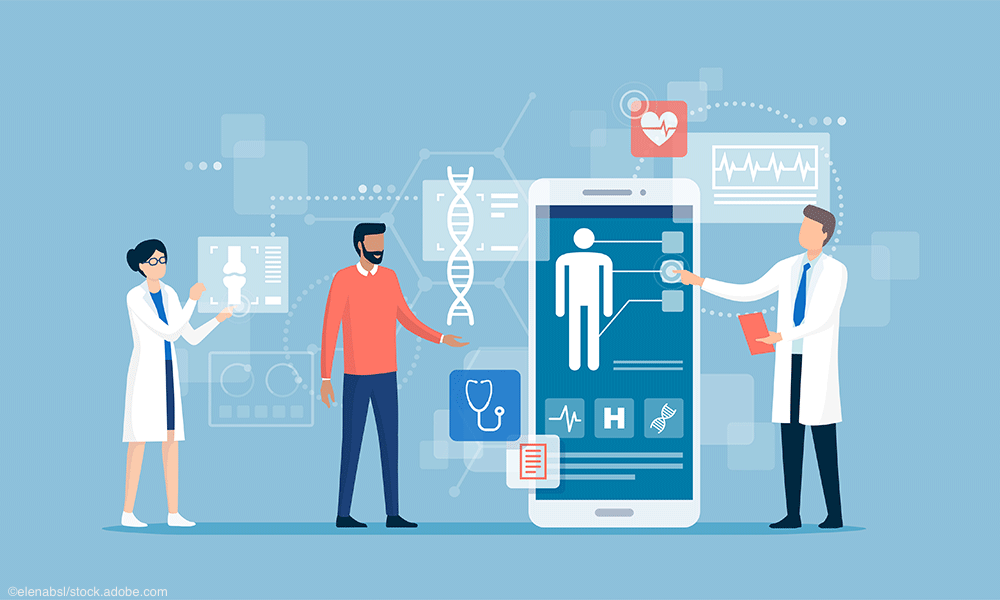How mobile apps are transforming the patient-doctor experience
Mobile apps have completely changed the medical field by providing healthcare professionals a safe, streamlined way to connect with patients and colleagues from anywhere. While virtual visits won’t completely replace seeing patients in person, doctors will need to equip their practices with up-to-date tech to keep up with the competition and patient demands.

Shifting to virtual medical practice has long been in the works, but we have seen slow adoption rates by both healthcare providers and patients. Recently, that has all changed.
The use of telehealth services has dramatically increased since the start of the COVID-19 pandemic. In 2020, 95% of medical centers reported having telemedicine capabilities, compared to only 43% in 2019, according to CDC data. Additionally, Deloitte’s 2020 Survey of US Physicians revealed that, since 2018, there has been a 25% increase in the number of physicians communicating with patients through electronic health records.
Patients seem to have easily adapted to new virtual methods and will likely continue to expect telemedicine services in a post-pandemic world. In a report by Doctor.com, 83% of patients said they expect to continue using telemedicine even after the pandemic, with nearly 70% listing “easy-to-use technology” as the top factor encouraging them to use telemedicine.
As the medical field continues to move toward an increasingly virtual environment, what implications does this hold for the patient-doctor relationship? Here are some of the ways that mobile apps are transforming the healthcare experience.
Greater access to patient data
Widely used wearables in combination with the vast number of data collection tools that are now available have given doctors greater access to patient analytics than ever before. HIPAA-compliant mobile apps allow physicians to communicate with patients and staff, as well as collect and share sensitive health information from virtually anywhere in the world.
While these real-time insights offer more precise monitoring of health conditions, better predictions about patient outcomes, and practice management insights (i.e., customer satisfaction levels, medical form completion rates, pending payments, etc.), digital tools are also susceptible to security breaches that can result in expensive fines for physicians.
In 2020, medical providers paid more than $13.5 million in HIPAA settlements and civil monetary penalties to the Department of Health and Human Services’ Office for Civil Rights. Depending on the severity of a HIPAA violation, fines range from $100 to $50,000. For this reason, it’s imperative that doctors ensure all of their digital tools are HIPAA compliant, from patient intake forms to videoconferencing tools. Any third-party providers they work with must also ensure HIPAA compliance by signing a business associate agreement.
Webside manner
Nowadays, building a positive relationship goes beyond proper bedside manner. In fact, physicians are more concerned about their “webside manner.”
“Webside manner” requires a slightly different set of skills, such as understanding how to operate videoconferencing software and ensuring there are no unauthorized people present during a patient’s virtual visit.
In NRC’s 2021 Healthcare Consumer Trends Report, which surveyed 150,000 telehealth users, 92% of respondents reported having a positive experience with their virtual provider and indicated that easy scheduling tools, attentive providers, respectful interactions, and a reasonable amount of time spent with their physician all contributed to a positive patient experience.
For optimal virtual visits, clinicians should choose a quiet, well-lit location to set up shop; make sure their tech capabilities offer a seamless experience (e.g., no glitches or security breaches); ensure HIPAA compliance during video calls; and make eye-contact with their patients to show they are listening.
More face time with patients
Improved operational efficiencies have translated to less time spent on administrative tasks and increased face time between doctors and patients.
Paper trails and manual data entry have largely been replaced by tablets and digital forms programmed with conditional logic for higher completion rates. Patients can now safely check in for appointments and submit their co-payments digitally. Front desk staff are immediately notified whenever a patient submits an online consent form prior to an appointment. And both doctors and patients are able to simply hop on a videoconference as opposed to commuting to an office.
These small actions add up to significant time savings, which result in more time spent actually providing care.
Mobile apps have completely changed the medical field by providing healthcare professionals a safe, streamlined way to connect with patients and colleagues from anywhere. While virtual visits won’t completely replace seeing patients in person, doctors will need to equip their practices with up-to-date tech to keep up with the competition and patient demands.